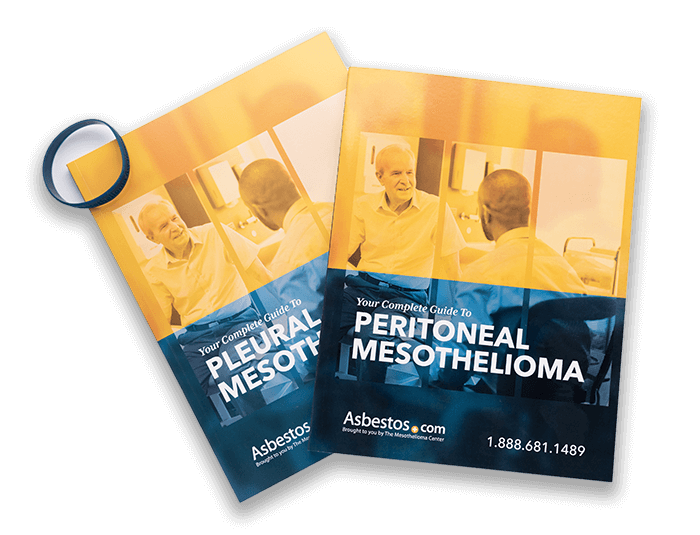Written by Michelle Whitmer | Scientifically Reviewed By Arti Shukla, Ph.D. | Edited By Walter Pacheco | Last Update: July 16, 2024
Asbestos Exposure in Connecticut
Naval yards and shipping hubs have driven the state’s economy for decades. But these job sites also posed prominent asbestos threats to employees. Shipbuilders and sailors were at high risk of inhaling asbestos. It was a common insulator on private and U.S. Navy vessels.
Workers at aircraft manufacturers, metal works and chemical plants were also at high risk for asbestos exposure. Employees at Connecticut’s former asbestos mine faced a high risk of exposure.
The state had several other serious asbestos threats. Examples include the helicopter manufacturer Silkorsky Aircraft and the Quinebaug cotton mill. Simpkins Industries Paper Mill and Hersey Metals Co. also used asbestos. Hundreds of other industrial plants relied on asbestos as insulation for machinery. This exposed employees to the fibers during daily operations.
Many of Connecticut’s historic buildings contained asbestos-contaminated construction materials. Public buildings such as Berlin Town Hall and Bethel Church had asbestos. Many private buildings and residences also contain asbestos.
In December 2021, Connecticut allocated $2.5 million to fund the remediation of asbestos at a Raymark Industries site. Located in Stratford, Raymark manufactured automotive breaks containing asbestos for almost 80 years.
Occupations and Environmental Areas at Risk
Many Connecticut jobs are tied to marine industries. Groton was named “The Submarine Capital of the World,” and the city’s Electric Boat Company was the U.S. Navy’s leading submarine contractor. The state was also a leading manufacturer of clipper ships in the 19th century, and Navy submarines in the 20th century.
Quinebaug Mill
Quebec Square Historic District is home to older industrial sites, including Quinebaug Mill. Built in 1856, the mill site included several buildings. All the buildings had asbestos-shingle roofs. Several of the residential houses for the millworkers also used asbestos siding.
Connecticut Asbestos Mine
Located on Steel Road near Nepaug in Litchfield County, this unnamed mine was a past producer of anthophyllite asbestos. Mesothelioma, lung cancer and asbestosis can develop after exposure to anthophyllite asbestos.
For example, a study reported four mesothelioma cases among 736 anthophyllite miners. Experts expected only one case based upon exposure conditions. Researchers noted that lung cancer increased with anthophyllite exposure and cigarette smoking.
Connecticut Shipyards
Shipyards used asbestos for the first three-quarters of the 20th century. The fibers became a waterproof insulator. Pipes, gaskets and other machinery contained asbestos materials.
Shipyards and ships had many confined workspaces that contained asbestos. High concentrations of asbestos circulated in the air. Poor ventilation in the tight work quarters caused fibers to become trapped.
Shipyards in Connecticut:
- Derecktor Shipyards
- Groton Ironworks – Noank Campus
- Seabury & Eugene S. Belden Shipyard
- Groton Ironworks – Thames River Campus
- Robert Palmer and Son Shipyard – Noank
- Eastern Shipbuilding
- Gilbert Transportation Company Yard
- Mystic Shipyards
- General Dynamics Electric Boat Company
- Thames Towboard Company of New London
Shipyard workers and Navy veterans have higher rates of mesothelioma because of the exposure they endured. Some of their family members also got sick from secondary asbestos exposure.
Military Buildings
The Bradley Air National Guard squadron headquarters harbored many asbestos products. Located in Granby, Connecticut, it used corrugated asbestos in their airplane hangars. Asbestos metal was a favored roofing material.
In 2009, workers removed asbestos-containing floor mastic and caulking. Previous abatement and air sampling took place at the facility in 2006.
The New London Naval Submarine Base on the Thames River in Groton was the world’s largest submarine base. By 1959, the base employed 8,210 active personnel. The base also had its own conversion and repair unit. Workers replaced or removed asbestos from submarines at the unit.
In 2008, workers removed asbestos from the New Haven Coast Guard buildings. It cost $398,000. Earlier, the Coast Guard Academy’s Chase Hall B Annex found asbestos tiles. The Coast Guard Museum was also closed in 2011 for asbestos abatement.
Other Exposure Sites
Connecticut was also home to many industrial companies that used asbestos. Chemical factories, power plants and manufacturing plants were all high-risk sites.
Some Connecticut-based companies may have exposed their employees to asbestos. Examples include the Connecticut Yankee Atomic Power Plant and Millstone Power Plant. The Smurfit-Stone Container Corporation also used asbestos.
Asbestos was a common construction material until the 1980s. Companies built many of the buildings in Connecticut with asbestos products.
Asbestos-contaminated buildings in Connecticut:
- Arbor Acres Farm
- Grayledge Farms
- Mass Mutual/Connecticut Mutual
- Southern Connecticut State University – Engelman Hall
- CT Healthcare System – West Haven Branch
- Felician Sisters Convent
- Manchester Parkade Shopping Complex
- Penfield Reef Lighthouse
- Wesleyan University – North College Building
Homes built before the 1980s likely contain asbestos building materials. Homeowners should not disturb materials that may contain asbestos. It is important to hire professionals for asbestos testing and abatement.
This Page Contains 16 Cited Articles
The sources on all content featured in The Mesothelioma Center at Asbestos.com include medical and scientific studies, peer-reviewed studies and other research documents from reputable organizations.
- Kane, J. (2021, December 28). $2.5M in state funds will allow for final cleanup of a contaminated Connecticut site. Retrieved from https://www.ctpublic.org/news/2021-12-28/2-5m-in-state-funds-will-allow-for-final-cleanup-of-a-contaminated-connecticut-site
- U.S. Geological Survey. (2014, September 3). Unnamed Mine. Retrieved from http://mrdata.usgs.gov/asbestos/show.php?labno=419
- Meurman, L., Pukkala, E. and Hakama, M. (1994, June). Incidence of Cancer among Anthophyllite Asbestos Miners in Finland. Occupational and Environmental Medicine. Retrieved from http://www.jstor.org/stable/27730129?seq=1#page_scan_tab_contents
- Federal Business Opportunities. (2006, September 22). Z--Asbestos Abatement and Air Sampling. Retrieved from https://www.fbo.gov/index?s=opportunity&mode=form&id=3ff8001b1ec2b6f84fc07b3316f27f5f&tab=core&_cview=0
- Federal Business Opportunities. (2002, February 28). Z--New London, CT Chase Hall B Annex Asbestos Tile Removal. Retrieved from https://www.fbo.gov/index?s=opportunity&mode=form&id=7175e267fdde81d9eb57aa8af268bcfa&tab=core&_cview=1
- GlobalSecurity.org. (2011, May 7). Naval Submarine Base New London. Retrieved from http://www.globalsecurity.org/military/facility/new_london.htm
- Leavenworth, J. (2011, July 25). Asbestos Removal in Parkade to Begin Soon. Retrieved from http://articles.courant.com/2011-07-25/community/hc-manchester-asbestos-0726-2-20110725_1_asbestos-removal-sign-removal-vacant-buildings
- Marteka, P. (2010, January 21). Crews Remove Asbestos at Abandoned Chicken Farm. Retrieved from http://articles.courant.com/2010-01-21/community/hc-glastonbury-demo-0122.artjan21_1_arbor-acres-grayledge-farms-master-plan
- State of Connecticut Judicial Branch. (2007, September 18). Fredette v. Connecticut Air National Guard et al. Retrieved from: http://www.jud.ct.gov/external/supapp/Cases/AROcr/CR283/283CR133.pdf
- Eident, C. (2009, May 26). Asbestos Roofing Removal Plan. Retrieved from https://www.google.com/url?q=http://www.wesleyan.edu/construction/majormaint/fy_10_data/north_college_images/Eagle%2520RIVET%2520roof%2520asbetsos%2520PLAN%2520WESLEYAN.doc&sa=U&ei=-ZeaVdfTH8SYyAS8pZ2wBQ&ved=0CAQQFjAA&client=internal-uds-cse&usg=AFQjCNGqAItsH4bpgqXs-usWxtuyyaWF5Q
- FedBizOpps.Gov. (2011, May 9). Moving & Storage of Office Goods. Retrieved from https://www.fbo.gov/?s=opportunity&mode=form&id=13efb3a2108070cae00bfa42c2f3dc4e&tab=core&tabmode=list&print_preview=1
- United States Department of the Interior. (1985, July 29). National Register of Historic Places Inventory Quinebaug Mill/Quebec Square Historic District. Retrieved from http://pdfhost.focus.nps.gov/docs/NRHP/Text/85001921.pdf
- Coppolo, G. (2009, December 31). Asbestos Litigation in Connecticut. Retrieved from http://www.cga.ct.gov/2009/rpt/2009-R-0235.htm
- Connecticut Department of Public Health. (1999, June 4). Licensure and Training Requirements for Persons Engaged in Asbestos Abatement and Consultation Services. Retrieved from http://www.ct.gov/dph/lib/dph/environmental_health/asbestos/docs/152_licensure_and_training_.doc
- Centers for Disease Control and Prevention, National Center for Health Statistics. (2018). Underlying Cause of Death 1999-2017 on CDC WONDER Online Database. Retrieved from http://wonder.cdc.gov/ucd-icd10.html
- Storace, R. (2018, September 25). Conn. Supreme Court Upholds Workers' Comp Award in Asbestos-Related Cancer Case. https://www.law.com/ctlawtribune/2018/09/25/conn-supreme-court-upholds-workers-comp-award-in-asbestos-related-cancer-case/?slreturn=20190107124047








